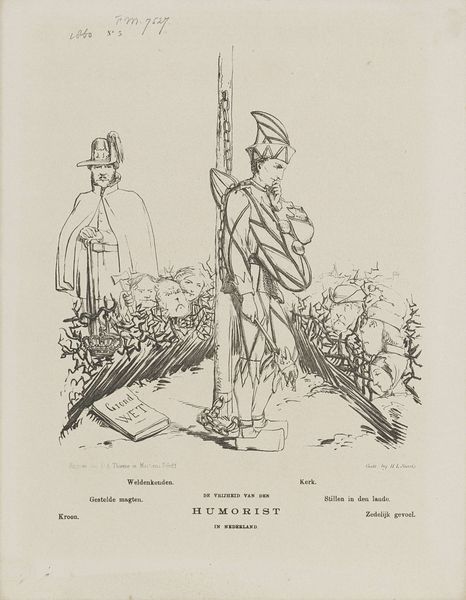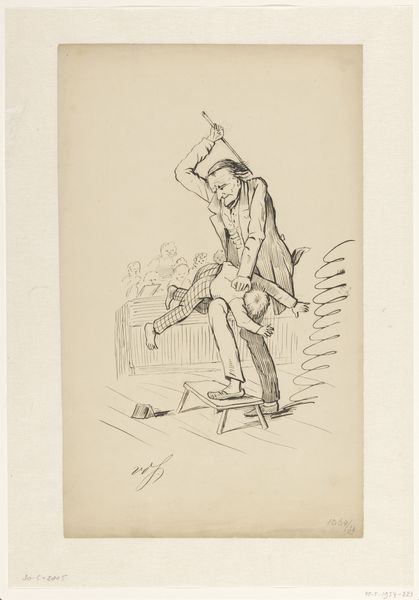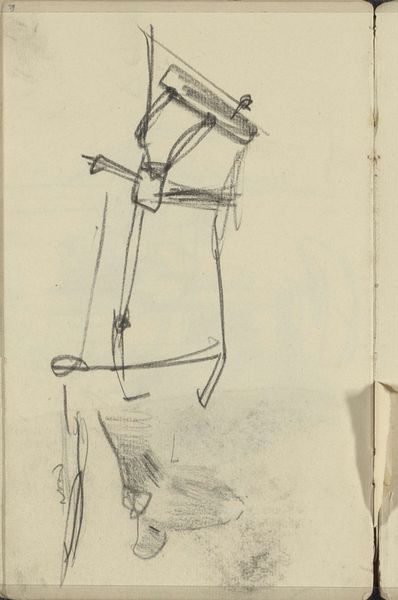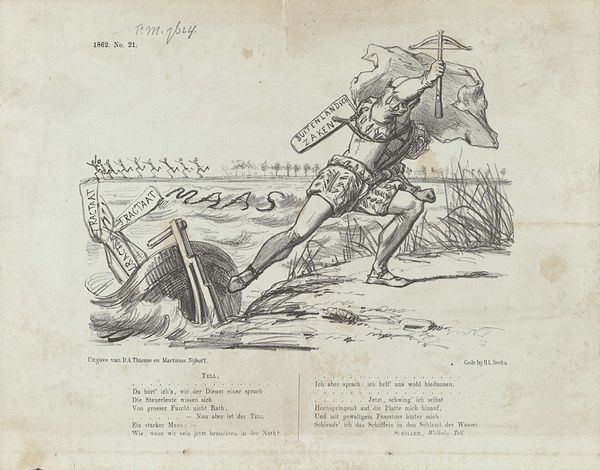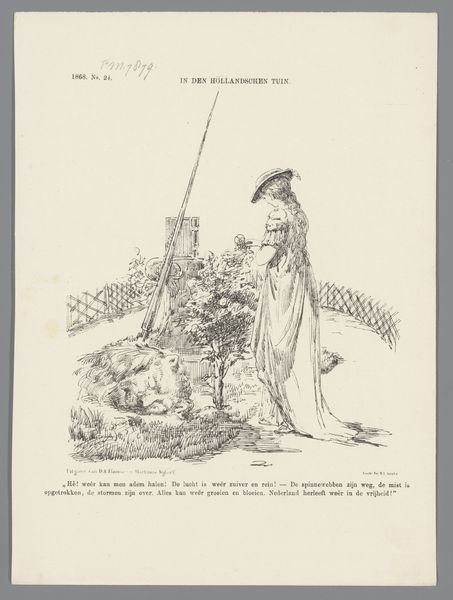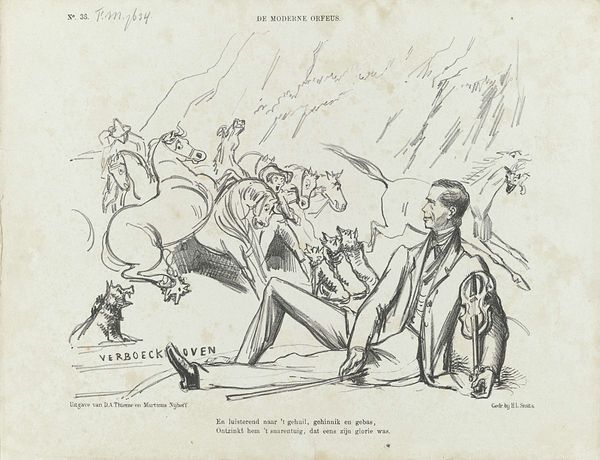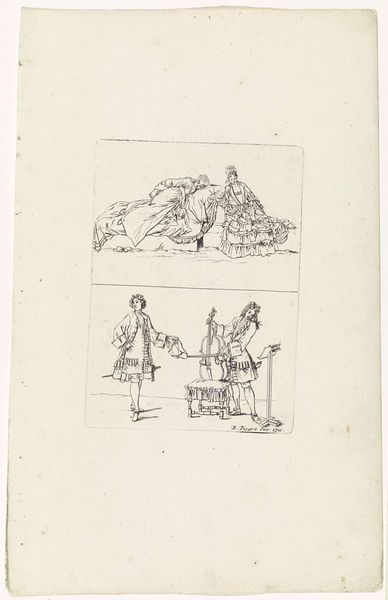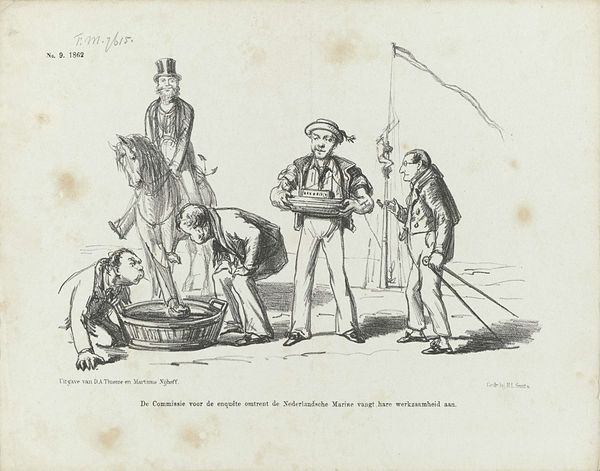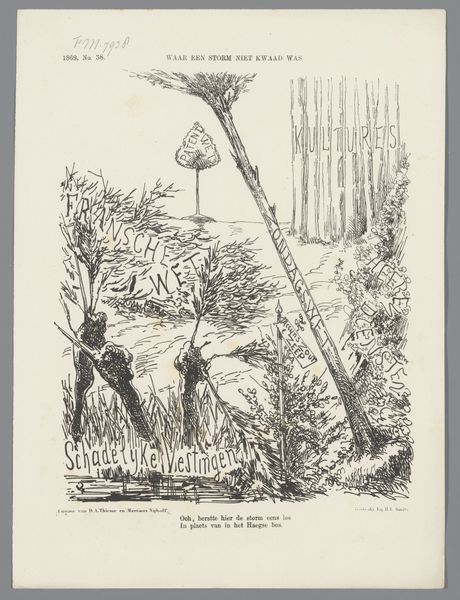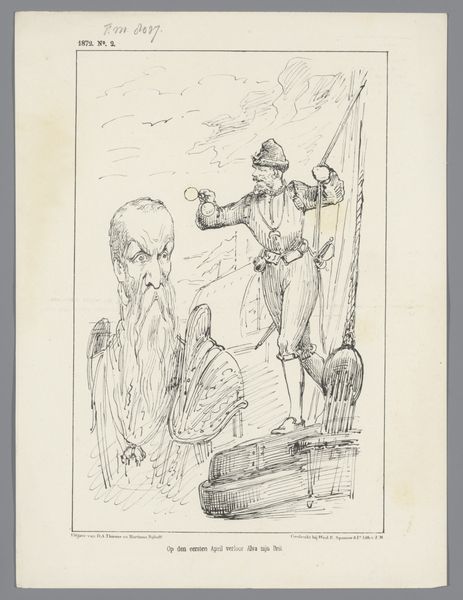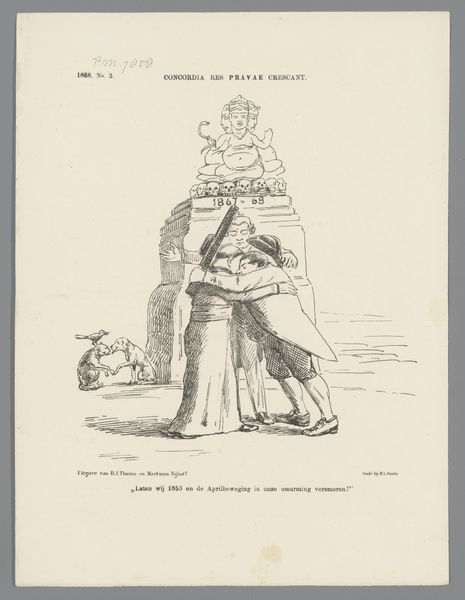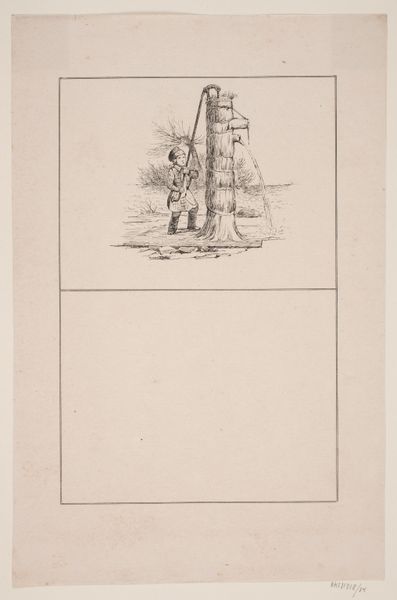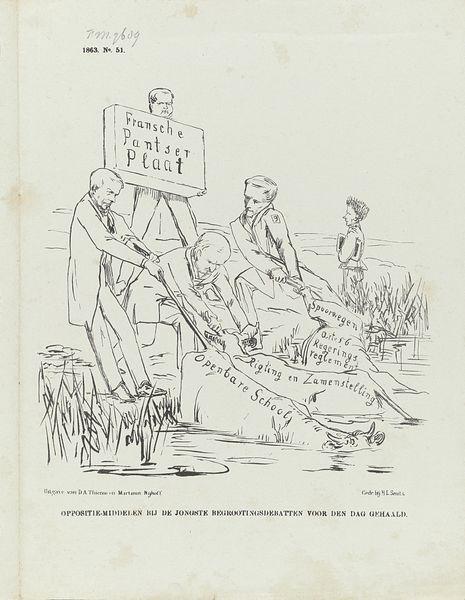
Spotprent op de oppositie tegen het Reglement voor Suriname, 1865 1865
0:00
0:00
drawing, ink, pen
#
drawing
#
comic strip sketch
#
quirky sketch
#
caricature
#
personal sketchbook
#
ink
#
idea generation sketch
#
sketchwork
#
ink drawing experimentation
#
folk-art
#
sketchbook drawing
#
pen
#
history-painting
#
storyboard and sketchbook work
#
sketchbook art
#
initial sketch
Dimensions: height 275 mm, width 215 mm
Copyright: Rijks Museum: Open Domain
Curator: This drawing, titled "Spotprent op de oppositie tegen het Reglement voor Suriname, 1865," created in 1865 using pen and ink, offers an intriguing lens through which to consider the material realities of power. Editor: I see that. The figure in the walker looks constrained, almost puppet-like. How does this visual representation connect to the actual historical context? Curator: Let’s consider the drawing's function as a mode of production. It's an act of visual commentary using accessible and reproductive materials like pen and ink. The act of circulating such an image can be seen as part of a broader material struggle, a war of images tied to the means of representation. What is being distributed? Ideas. The sitter here being literally confined by a "walker" speaks directly to the limitations being placed upon the Surinamese. This cartoon's simple material production and means of distribution are designed for maximum persuasion. The mode of creating such a drawing, how might this be similar to forms of protest during that time? Editor: That’s interesting. The deliberate simplicity of the materials—pen and ink—makes it easily reproducible. You’re saying the cheapness allows it to function almost as propaganda? Curator: Precisely! The material limitations are also what make it powerful, no? Look at the rough line work, and its accessibility. If the image were more 'refined' do you believe its political aims would be as direct, and affecting? The intent of these "folk" sketches serve as direct and sometimes effective resistance to hegemonic cultural narratives, through labor of its very crafting. What more does its content betray in your opinion? Editor: Now that I think of the drawing in terms of labor and distribution of political opinions, its form appears much more active, less of a passive reflection, and more a means of intervening in a social debate. Curator: Indeed. By understanding how this image was made and circulated, we can better understand its place in the broader context of power dynamics and resistance, where tools and forms such as caricature became materials. Editor: It’s amazing how shifting the focus to the material production changes the interpretation of the artwork. Curator: Exactly. Focusing on the artistic practice reminds us that creating and consuming such material objects were actions that played a role in historical struggles.
Comments
No comments
Be the first to comment and join the conversation on the ultimate creative platform.
